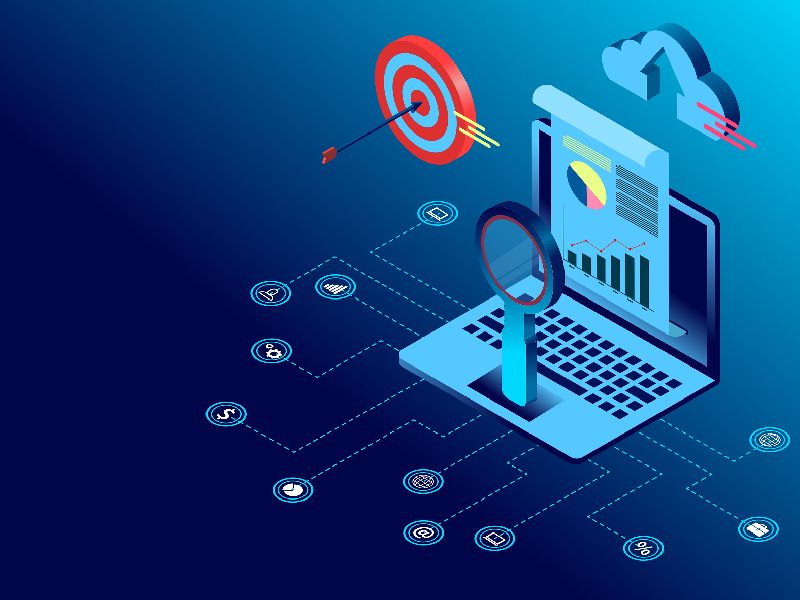I. Introduction
Hello, I’m Alex Rohdes. Over my 40-year journey in software engineering, I’ve seen firsthand the astonishing evolution of app development and the ever-growing importance of app security. When I started in this industry, our biggest concerns were often performance and functionality. However, as digital landscapes have expanded and cyber threats have become more sophisticated, the focus has shifted significantly. Now, ensuring the security of an app is not just a technical challenge; it’s a vital responsibility that we, as developers and technologists, owe to our users.
In my career, I’ve witnessed and tackled numerous security challenges, from the early days of mobile apps to the current era of cloud computing and big data. These experiences have not only sharpened my technical skills but also taught me the importance of foresight, adaptability, and continuous learning in the face of new threats.
In this article, I’ll share some of these personal anecdotes and real-world scenarios. Each story is a slice of history from the trenches of app development, highlighting not just the challenges we faced but also the strategies and solutions that proved effective. My aim is to provide you, the reader, with practical insights into the complexities of app security, offering a glimpse into the lessons learned and the innovative approaches that helped us overcome various obstacles.
So, whether you’re a budding developer, a seasoned tech professional, or simply someone fascinated by the interplay of technology and security, I invite you to join me on this journey through the annals of app security challenges. Let’s explore together the intricacies, the setbacks, and the triumphs that have shaped the world of app development as we know it today.
II. The Evolving Landscape of App Security
When I first dipped my toes into the world of software engineering, the digital universe was vastly different from what it is today. The concept of a “mobile app” was still a distant future, and security concerns were often limited to physical hardware or localized networks. However, as technology evolved, so did the nature of threats, transforming app security into a dynamic and critical field.
The Early Days: Simplicity and Obscurity
In the early days, our primary focus was getting the software to work efficiently. Security was often an afterthought, partly due to the lesser degree of connectivity and the relative obscurity of our platforms. But as internet usage exploded and mobile devices became ubiquitous, this obscurity vanished, ushering in new challenges.
The Rise of Mobile Apps: A New Frontier
The advent of smartphones marked a pivotal shift. Suddenly, software wasn’t just sitting on a desk; it was in everyone’s pockets, carrying personal information and sensitive data. This shift brought a realization: security is not just about safeguarding software, but also about protecting the privacy and trust of users.
The Cloud Era: Uncharted Waters
As cloud computing began to dominate, the complexity of security escalated. Now, we weren’t just guarding against individual hackers but also sophisticated cyber-attacks that could compromise vast amounts of data. This era demanded a new approach, focusing on proactive threat detection and robust encryption methods.
Today’s Landscape: An Ongoing Battle
Today, app security is an ever-evolving battle against emerging threats. It’s no longer just about building a wall around your app; it’s about creating a resilient and adaptable system capable of withstanding and evolving with new challenges.
Throughout my career, I’ve had the opportunity to navigate these shifting sands, learning valuable lessons and strategies along the way. In the next sections, I’ll share some of these experiences, delving into real-life scenarios that highlight the crucial importance of app security and the innovative tactics that can be employed to ensure it. Stay tuned for a journey through the trenches of app security challenges.
III. The Early Days Challenge
The Inception of a Security Mindset
Let’s rewind to the early 2000s, a time when mobile apps were just beginning to gain traction. I was part of a team developing one of the first mobile banking apps – a venture that was both exciting and daunting due to the sensitive nature of the data involved.
The Challenge: A Vulnerability Exposed
During the beta testing phase, we encountered a significant security flaw. Our app, designed to provide easy access to banking services, inadvertently exposed user data due to a weakness in our encryption protocols. This was a critical moment, not just for the project but for my understanding of app security.
The Response: Implementing a Robust Solution
The revelation of this vulnerability served as a wake-up call. We halted the release and went back to the drawing board. My team and I worked tirelessly to develop a more robust encryption mechanism, one that would not only fix the immediate issue but also set a higher standard for mobile app security.
The Outcome: Setting a New Standard
After weeks of rigorous development and testing, we successfully implemented the new security protocol. The launch of the app was met with positive reviews, particularly for its high level of security. This experience was a pivotal moment in my career, underscoring the importance of prioritizing security from the outset of any project.
The Lesson: Proactive Security is Paramount
This incident taught me a crucial lesson: in the world of app development, security cannot be an afterthought. It must be woven into the very fabric of the development process, evolving continuously to meet new challenges.
This story from the early days of my career is a testament to the evolving nature of app security and the need for constant vigilance and innovation in protecting user data.
IV. The Modern-Day Dilemma
Navigating the Complexities of Contemporary App Security
Fast forward to the mid-2010s. The landscape had changed dramatically with cloud computing and big data becoming the norm. I was then involved in a project for a widely-used social media app, which presented a new set of challenges in the realm of app security.
The Challenge: A Large-Scale Data Breach
Our team faced a daunting challenge when a sophisticated cyber-attack led to a significant data breach. The breach exposed vulnerabilities in our cloud storage security, affecting millions of users. This incident not only posed a technical challenge but also threatened user trust and the app’s reputation.
The Response: A Multifaceted Security Overhaul
Addressing this crisis required a comprehensive strategy. I spearheaded a team to revamp our security measures, focusing on two key areas: AI-driven threat detection and enhanced user authentication. We integrated advanced algorithms to monitor and predict potential security threats actively. Simultaneously, we implemented a multi-factor authentication system to strengthen user access security.
The Outcome: Restoring Trust and Security
These measures transformed our security architecture, making it more resilient and responsive to emerging threats. The implementation was successful, significantly reducing vulnerabilities and restoring user trust. This incident was a stark reminder of the continuous and evolving nature of threats in the digital world.
The Lesson: Adaptability and Advanced Defenses are Essential
The key takeaway from this experience was the importance of adaptability and the adoption of advanced defense mechanisms in app security. In an era where cyber threats are constantly evolving, staying ahead requires continuous learning, innovation, and the willingness to adopt new technologies.
These two stories from my career highlight the dynamic and challenging nature of app security. They exemplify not only the technical hurdles we face as developers but also the critical importance of being proactive, innovative, and adaptable in our approach to protecting user data and maintaining trust.
V. Key Strategies for Ensuring App Security
Drawing from the lessons learned in my career, here are some key strategies and best practices that are crucial for ensuring robust app security in today’s ever-evolving digital environment.
Embrace a Security-First Approach
- Proactive Security Planning: Start with a security-first mindset. From the initial stages of app development, prioritize security considerations. This approach helps in identifying potential vulnerabilities early and integrating robust security measures from the ground up.
- Regular Security Audits and Updates: The digital landscape is constantly changing, and so are the methods of cyberattacks. Regularly auditing your app for security vulnerabilities and promptly updating security features is vital in staying ahead of potential threats.
Implement Robust and Multi-Layered Security Measures
- Advanced Encryption Techniques: Utilize state-of-the-art encryption methods to protect sensitive user data. Encryption should not just be strong but also adaptable to counter new types of breaches.
- Multi-Factor Authentication (MFA): Implementing MFA adds an extra layer of security, significantly reducing the chances of unauthorized access.
- AI and Machine Learning for Threat Detection: Leverage AI and machine learning algorithms to detect and respond to security threats in real-time. These technologies can identify patterns and anomalies that might indicate a security breach.
Foster a Culture of Security Awareness
- Educate Your Team: Ensure that every member of your development team understands the importance of security and is updated on the latest security practices and threats.
- User Education and Transparency: Educate your app users about security best practices. Being transparent about your security measures can also build trust and encourage users to take an active role in safeguarding their data.
Continuous Testing and Monitoring
- Rigorous Security Testing: Conduct thorough testing, including penetration testing and vulnerability assessments, to identify and fix security flaws.
- Real-Time Monitoring: Implement systems for continuous monitoring of app performance and security. This ongoing vigilance helps in quickly identifying and addressing any security issues that may arise.
Staying Informed and Adaptable
- Keep Abreast of Latest Trends and Threats: The field of cybersecurity is rapidly evolving. Staying informed about the latest trends, threats, and technologies is crucial for maintaining effective security measures.
- Adaptable Security Strategies: Be prepared to adapt and update your security strategies in response to new challenges and technological advancements.
Incorporating these strategies into your app development and maintenance processes can significantly strengthen your app’s security posture. It’s about creating a balance between robust security measures and a seamless user experience, ensuring that your app is not only functional and user-friendly but also secure and trustworthy.
VI. The Future of App Security
As we look towards the future, it’s clear that app security will continue to play an increasingly critical role in the digital world. Based on my experiences and observations, here are some insights and predictions about the direction of app security in the coming years.
Emerging Technologies and Their Implications
- Artificial Intelligence and Machine Learning: These technologies will become more integral to security strategies. AI and ML can proactively identify and neutralize threats before they become critical issues, leading to more intelligent and responsive security systems.
- Blockchain for Enhanced Security: Blockchain technology holds great potential for app security, particularly in areas like data integrity and secure transactions. Its decentralized nature can provide a new layer of security against data tampering and breaches.
- Internet of Things (IoT) Security: As IoT devices become more prevalent, securing these interconnected systems will pose unique challenges. The future will demand innovative approaches to ensure the security of not just standalone apps but entire ecosystems.
Evolving Threat Landscape
- Sophisticated Cyberattacks: Cyber threats will continue to evolve, becoming more sophisticated and harder to detect. This evolution will require equally sophisticated defense mechanisms, including advanced encryption and real-time threat detection and response systems.
- Privacy Regulations and Compliance: With increasing concerns about data privacy, we can expect more stringent regulatory frameworks governing app security. Compliance with these regulations will not just be a legal obligation but also a key factor in building user trust.
The Human Element
- User Education and Awareness: As technology becomes more complex, educating users about security risks and best practices becomes more crucial. A well-informed user base can significantly enhance the overall security of an app.
- Security as a Shared Responsibility: The future of app security is not just in the hands of developers or security professionals; it will require a collaborative effort. Recognizing security as a shared responsibility between developers, businesses, and users is vital.
Conclusion: A Continuous Journey
App security is a journey, not a destination. It requires constant vigilance, adaptation, and a commitment to staying ahead of the curve. As developers and stakeholders in the digital world, we must be proactive in our approach, continuously seeking to improve and innovate. The future of app security is both challenging and exciting, and it holds immense potential for those ready to embrace its complexities and opportunities.
VII. Conclusion
Reflecting on the myriad experiences and challenges encountered throughout my career, a few key takeaways stand out, shaping my perspective on app security.
Embrace the Evolution
App security is a dynamic, ever-evolving field. The strategies that worked yesterday may not be sufficient tomorrow. Embracing this constant evolution is crucial. It requires an ongoing commitment to learning, adapting, and innovating.
Balance is Key
While security is paramount, it must be balanced with user experience. Overly stringent security measures can impede functionality and deter users. The art lies in implementing robust security that seamlessly integrates with user-friendly app design.
Collaborative Effort
Securing apps is not a solitary endeavor but a collective responsibility. It involves developers, users, security professionals, and regulatory bodies working together. Fostering a culture of security awareness and collaboration is vital for the development of safer digital spaces.
Forward-Looking Approach
Looking ahead, the landscape of app security will continue to be shaped by emerging technologies, evolving threats, and changing regulations. Staying informed and adaptable is essential. We must anticipate future trends and prepare to meet them head-on.
The Human Factor
At its core, app security is about protecting people – their data, their privacy, and their trust. Keeping the human element at the forefront of security strategies is crucial. After all, technology serves humanity, and its security is pivotal in ensuring its beneficial impact on society.
As we navigate the intricate world of app security, let us do so with vigilance, foresight, and a commitment to excellence. The journey is complex, but it is also incredibly rewarding. Here’s to a future where we continue to push the boundaries of what’s possible, securely and responsibly.
Thank you for joining me on this exploration of app security challenges and strategies. I hope these insights and stories from my career have provided valuable perspectives and encouraged a deeper understanding and appreciation of the importance of app security in our increasingly digital world.











